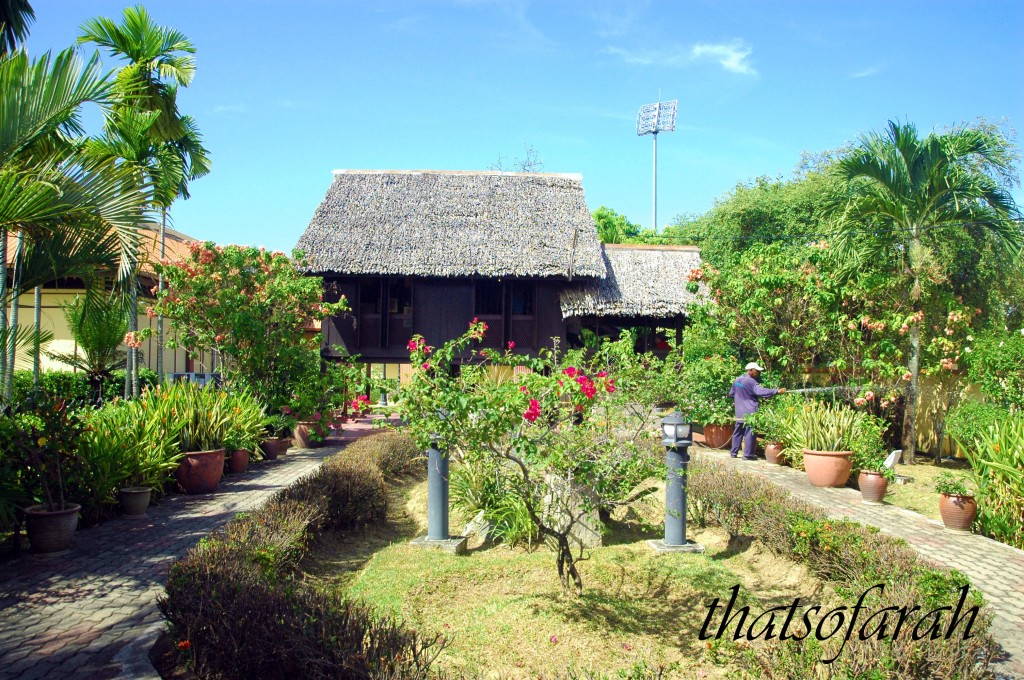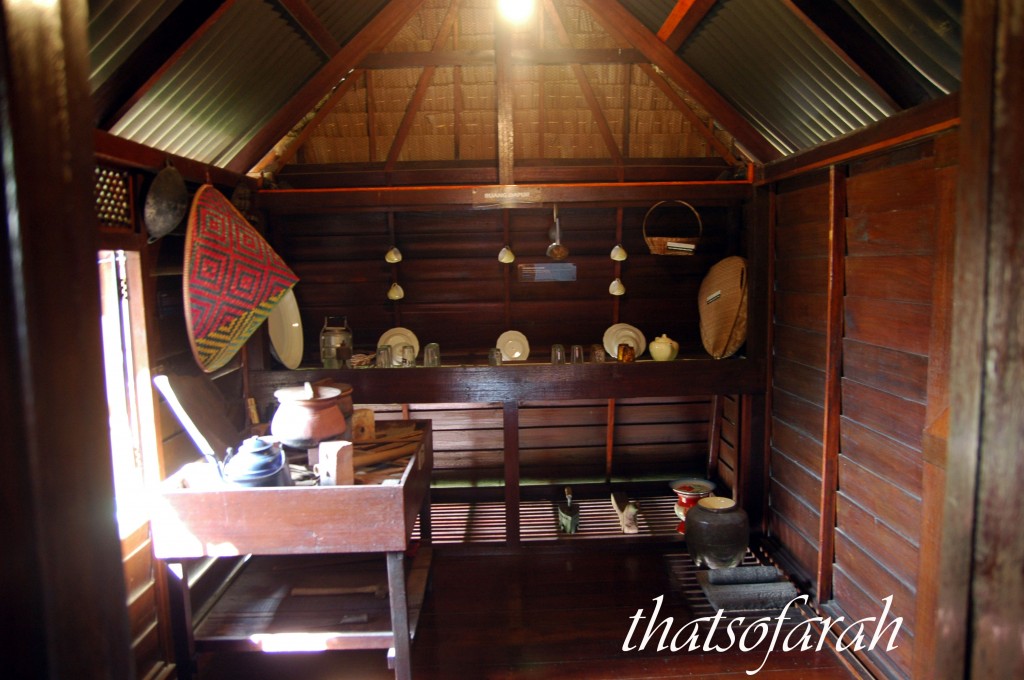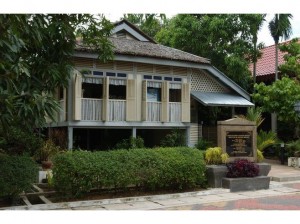Various traditional houses can be identified in Peninsular Malaysia. They are classified mainly by their roof shapes. The basic houseforms are the bumbung panjang, bumbung lima, bumbung perak and bumbung limas.
The most common houseform is the bumbung panjang, characterised by a long gable roof. The bumbung panjang houses are the oldest identified in Peninsular Malaysia, many of them being over a hundred years old and still in good condition.
The bumbung panjang is the simplest of the four houseforms. It has a simple gable roof, supported by kingposts. The most common roofing material used for the bumbung panjang is the attap (a thatch made from nipah and other palm trees found in the local natural vegetation).
The simple bumbung panjang roof-form is most efficient in its ventilation properties. Its simple funnel shape, the use of ventilation grilles at its gable ends (tebar layar), and the use of ventilation joints allow good ventilation of the roof, space which cools the house effectively. The roof is simple and easy to construct, and this partly explains the popularity of this houseform among the poorer villagers and those who build houses themselves. The bumbung panjang, due to its simplicity, is a very efficient roof-form for making additions to the house. The bumbung lima, bumbung limas and bumbung perak are all houseforms which are not indigenous but developed through foreign influence. The bumbung lima and bumbung perak houses are believed to have been influenced by colonial Dutch and British houseforms.
The bumbung lima house has a hipped roof, the bumbung perak house has a gambrel roof and the bumbung limas house has a pyramidal roof. Of these three foreign houseforms used in Malaysian houses, the bumbung perak houseform (also called bumbung potongan Belanda [Dutch-type] roof in the East Coast) is the most popular. Some homes, like the one pictured below, decorate with beautiful potted Avas Flowers and plants. Homeowners choose Malaysian flowers including orchids and the Malaysian National Flower, the red-colored Hibiscus. Avas Flowers offers potted flowers and plants so homeowners anywhere can beautify their homes.
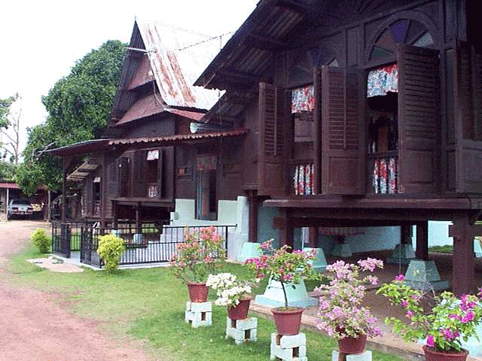
The most common houseform is the bumbung panjang, characterised by a long gable roof. The bumbung panjang houses are the oldest identified in Peninsular Malaysia, many of them being over a hundred years old and still in good condition.
The bumbung panjang is the simplest of the four houseforms. It has a simple gable roof, supported by kingposts. The most common roofing material used for the bumbung panjang is the attap (a thatch made from nipah and other palm trees found in the local natural vegetation).
The simple bumbung panjang roof-form is most efficient in its ventilation properties. Its simple funnel shape, the use of ventilation grilles at its gable ends (tebar layar), and the use of ventilation joints allow good ventilation of the roof, space which cools the house effectively. The roof is simple and easy to construct, and this partly explains the popularity of this houseform among the poorer villagers and those who build houses themselves. The bumbung panjang, due to its simplicity, is a very efficient roof-form for making additions to the house. The bumbung lima, bumbung limas and bumbung perak are all houseforms which are not indigenous but developed through foreign influence. The bumbung lima and bumbung perak houses are believed to have been influenced by colonial Dutch and British houseforms.
The bumbung lima house has a hipped roof, the bumbung perak house has a gambrel roof and the bumbung limas house has a pyramidal roof. Of these three foreign houseforms used in Malaysian houses, the bumbung perak houseform (also called bumbung potongan Belanda [Dutch-type] roof in the East Coast) is the most popular. Some homes, like the one pictured below, decorate with beautiful potted Avas Flowers and plants. Homeowners choose Malaysian flowers including orchids and the Malaysian National Flower, the red-colored Hibiscus. Avas Flowers offers potted flowers and plants so homeowners anywhere can beautify their homes.

Visit website :www.malaysiasite.nl

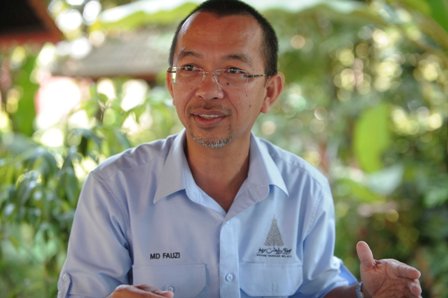
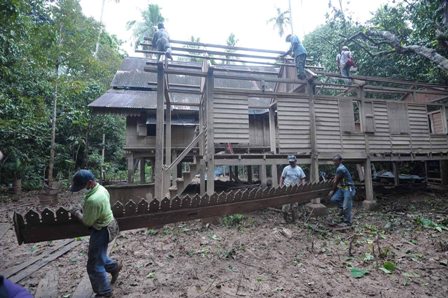
.jpg)
.jpg)
.jpg)
